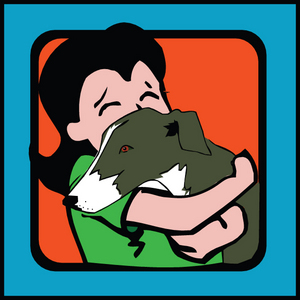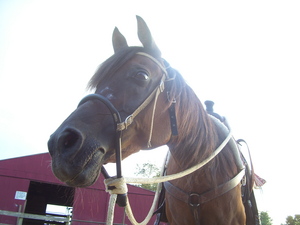Schizoaffective disorder is a psychiatric diagnosis used to describe a mental disorder characterized by recurring episodes of elevated (manic) or depressed mood. It can also be marked by periods of simultaneous elevated and depressed mood which alternate with ‘” or occur together with ‘” distortion(s) in perception. In most cases, the disorder will affect both cognition and emotion(s). In addition, a person suffering from Schizoaffective disorder is also likely to experience auditory hallucinations, paranoia, delusions, or disorganized speech and thinking. Significant social and occupational dysfunction are also typical.
The lifetime prevalence of the disorder is probably less than one percent (1%) ‘” usually in the range of 0.5 to 0.8 percent. Diagnosis of Schizoaffective disorder is based on a combination of the patient’s self-reported experiences as well as observed behavior. Currently there is no laboratory test for the purpose of diagnosing Schizoaffective disorder. It should be noted that individuals suffering from Schizoaffective disorder tend to have a more favorable prognosis than those with Schizophrenia, but a worse prognosis than those with mood disorders1.
Many factors including genetics, early environment, neurobiology (the biological study of the nervous system or any of its associated parts), psychological and social processes are important contributing factors in the development of Schizoaffective disorder. In addition, some recreational and prescription drugs may also cause or worsen symptoms of the disorder. Currently research is on-going on the role played by neurobiology, but a single, organic cause has yet to be determined.
The mainstay of treatment for Schizoaffective disorder is anti-psychotic medication combined with mood stabilizers or anti-depressants or a combination of both. In addition, psychotherapy and vocational and social/psychiatric rehabilitation are also important for recovery. If it is a situation where the person poses a risk to themselves ‘” or others ‘” brief hospitalization might be necessary.
People suffering from Schizoaffective disorder are likely to have co-morbid conditions such as anxiety disorders and substance abuse. Social problems, such as long-term unemployment, poverty, and homelessness are also common. Research has also shown that the life expectancy of people with the disorder is shorter than those without ‘” due to increased health problems as well as a higher suicide rate.
The diagnosis of Schizoaffective disorder was first introduced in 1933 and will be removed from or amended in the next iteration of the American Psychiatric Association’s Diagnostic and Statistical Manual of Mental Disorders (DSM-5) to be published in 2012.
What are the signs and symptoms of Schizoaffective Disorder?
Late adolescence and early adulthood are the peak years for the onset of Schizoaffective disorder, although ‘” in rare cases ‘” it has been diagnosed in childhood. These are critical periods in a person’s social and vocational development and, thus, onset of the disease can severely disrupt this development.
Schizoaffective disorder is characterized by recurring episodes of mood disorder and psychosis. By definition psychosis is a combination of paranoia, delusions, and hallucinations. In general, mood disorders are defined by discrete periods of either clinical depression, mixed episodes, and/or manic episodes. Individuals suffering from the disorder may experience psychotic symptoms before, during, or after the periods noted above.
Diagnosis of Schizoaffective disorder is often difficult since symptoms are similar to other disorders with prominent mood and psychotic symptoms. Several good examples are Bipolar disorder with psychotic features, recurrent depression with psychotic features, and Schizophrenia.
There are many similarities between Schizoaffective disorder, Schizophrenia, Bipolar disorder with psychotic features, and recurrent depression with psychotic features. Perhaps the most notable similarity is that with all three psychosis occurs during mood episodes. In contrast, with Schizoaffective disorder ‘” as it is currently defined ‘” psychosis must also occur during the period without mood symptoms. Until now it has been thought that mood episodes were either less prominent or totally absent in the case of Schizophrenia. Since these differences can be difficult to detect, a firm diagnosis Schizoaffective disorder might require an extended period of observation and treatment.
Left untreated, a person with Schizoaffective disorder may experience delusions. It should be noted that Schizoaffective disorder is an acute manifestation of an active psychosis and are not personality traits meaning that they subside when the psychosis subsides. Manifestations of these delusions include (the individual) believing that they are an important figure (such as the President), have some special purpose or destiny, or are being monitored, watched, or persecuted by something when, in reality, they are not. Persons with Schizoaffective disorder often feel extremely paranoid or might have the belief that an external force is controlling their thought processes. The latter is known as thought insertion.
Hallucinations ‘” involving all five (5) senses ‘” can also occur in cases of untreated or under treated Schizoaffective disorder. A person suffering from Schizoaffective disorder may see, hear, smell, feel, or taste things that aren’t actually there. These hallucinations can be overt visual hallucinations ‘” such as monsters ‘” or subtle ones such as a shadowy apparition. In addition, they might hear voices or music. Use of alcohol intensify the effects of these hallucinations.
Another problem arising from leaving Schizoaffective disorder untreated is that the individual may quickly change their mind regarding their spouse, friends, or family if they hear something negative being said about them; as a result they may attack or, conversely, isolate themselves from the person or group until they regain normal thoughts.
Co-morbid ‘” or co-occurring ‘” anxiety disorder(s) can also play a role in the subjective experience of Schizoaffective disorder and thus can shape the individual’s delusional thought content. For example, the person may feel anxious, have trouble swallowing and believe that outside forces are controlling the functioning of their throat.
What causes Schizoaffective disorder?
Although the cause ‘” or causes ‘” of Schizoaffective disorder are unknown, it is suspected that the diagnosis represents a mixed group of individuals, some with aberrant forms of Schizophrenia and some with very serious forms of mood disorders. Research has provided little evidence that Schizoaffective disorder ‘” in and of itself ‘” is a distinct variety of psychotic illness. As a result, it is thought to be a co-morbid condition along with Schizophrenia and mood disorder. Following this line of thought, it appears that Schizoaffective disorder exist on a continuum in-between Schizophrenia and severe Bipolar disorder and severe recurrent unipolar depression.
Many different genes may contribute to the genetic risk of acquiring Schizoaffective disorder. Additionally, there are many different biological and environmental are also believed to interact with the person’s genes in ways which can either increase or decrease the person’s risk for developing Schizoaffective disorder. Schizophrenia spectrum disorder (of which Schizoaffective disorder is a part) has been marginally linked to advanced paternal age at the time of conception ‘” a common cause of mutations2.
A clear casual connection between drug use and psychotic spectrum disorders ‘” including Schizoaffective disorder ‘” has been difficult to prove. The two most often used explanations for this are “substance use causes Schizoaffective disorder” and “substance use is a consequence of Schizoaffective disorder, and both might be correct. In the case of marijuana (cannabis), however, evidence is mounting that it can play in the development and morbidity of psychotic disorders including Schizoaffective disorder. For example, a 2007 meta-analysis showed that cannabis use is statistically associated with a dose-dependent increase in the risk of development of psychotic disorders ‘” including Schizoaffective disorder.
How is Schizoaffective disorder diagnosed?
Diagnosis is based on self-reported experiences of the person as well as abnormalities in behavior reported by family members, friends, or co-workers to a psychiatrist, psychiatric nurse, social worker, or clinical psychologist in a clinical assessment. There is a list of criteria that must be met for someone to be diagnosed with Schizoaffective disorder.
As has been previously noted, there are several psychiatric illnesses which may present with a similar range symptoms; among these are bipolar disorder with psychotic features, major depression with psychotic features, schizophrenia, drug intoxication, drug-induced psychosis and Schizophreniform disorder. These conditions need to be ruled out before a firm diagnosis of Schizoaffective disorder can be made.
An initial assessment ‘” of a person thought to be suffering from Schizoaffective Disorder ‘” includes a comprehensive history and physical examination. Although there are no biological test which confirm Schizoaffective disorder, tests are carried out to exclude medical conditions which rarely are associated with psychotic symptoms. These include blood tests to measure Thyroid Stimulating Hormone (TSH) to exclude hypo or hyperthyroidism, basic electrolyte and serum calcium panel to rule out metabolic disturbance, complete blood count (CBC) to rule out systemic infection or a chronic illness, and serology to exclude syphilis or HIV infection. In addition to the blood tests, the doctor might also order an Electroencephalogram (EEG) to include epilepsy as a cause as well as Computerized Axial Tomography (CT) scan of the head/brain to exclude brain lesions. It is important to rule out a delirium which can be distinguished by visual hallucinations, acute onset and fluctuating level of consciousness.
Investigations are generally not repeated in case of relapse unless there is a specific medical indication. These tests might include serum BSL if Olanzapine has previously been prescribed, thyroid function if Lithium has previously been taken to rule out hypothyroidism, liver function tests if Chlorpromazine has been prescribed, and Creatine phosphokinase (CPK) levels to rule out the possibility of neuroleptic malignant syndrome. These assessment(s) and treatment are usually done on an outpatient; admission to an in-patient facility is considered only if the person is a risk to themselves or others.
What are the DSM-IV-TR criteria for Schizoaffective Disorder?
The following are the revised criteria for a diagnosis of Schizoaffective disorder from the Diagnostic and Statistical Manual of Mental Disorders (DSM-IV-TR):
A. Two (or more) of the following symptoms are present for the majority of a one-month period -or a shorter period of time if symptoms get better with treatment):
Delusions, hallucinations, disorganized speech (e.g., frequent derailment or incoherence), grossly disorganized behavior (e.g., dressing inappropriately) or catatonic behavior, negative symptoms such as affective flattening (lack or decline in emotional response), anhendonia (lack or decline in ability to experience pleasure), alogia (lack or decline in speech), avolition (lack or decline in motivation), and social withdrawal.
If the delusions are judged to be bizarre, or hallucinations consist of hearing one (1) voice participating in a running commentary of the individual’s actions or hearing two or more voices conversing with each other, only that symptom is required to meet criterion A above. The speech disorganization criterion is only met if it is severe enough to substantially impair communications.
And at some time during the illness there is either one, two or all three of the following: Major depressive episode, Manic episode, or Mixed episode.
During the illness, delusions or hallucinations were present for a minimum of two(2) weeks,without major mood symptoms.
For a substantial part of the overall duration of both the active and residual period of the illness, symptoms meeting criteria for a mood episode are present.
Symptoms are not caused by drug abuse, medication, or other medical conditions.
Subtypes
Two subtypes of Schizoaffective disorder exist and may be noted in a diagnosis based on the mood component of the disorder:
Bipolar type if the disturbance includes: 1) a manic episode; and 2) a mixed episode.
Major depression episodes usually ‘” but not always ‘” also occur in the bipolar subtype, however, they are not required for DSM-IV diagnosis.
Depressive type. The depressive type is noted when the disturbances include major depressive episodes exclusively. This subtype is applied if major depressive episodes only (and no manic or mixed episodes) are part of the presentation.
Controversies and research directions
Citing poor inter-rater reliability, some psychiatrist have totally contested the concept of Schizoaffective disorder as a separate entity. The categorical distinction between mood disorders and Schizophrenia, known as the Kraepelinian dichotomy, has also been challenged by data from genetic epidemiology. Consequently, some researchers have disputed that the term “schizoaffectiver disorder” refers to a well defined condition, and have recommended that the term be removed or amended in future diagnostic manuals. In April, 2009, the DSM-5 Psychotic Disorders Work Group (led by psychiatrist William T. Carpenter, University of Maryland, College Park School of Medicine) reported that they will be “developing new criteria for schizoaffective disorder to improve reliability and face validity.” In addition, they will be “determining whether the dimensional assessment of mood will justify a recommendation to drop Schizoaffective as a diagnostic category.”
How is Schizoaffective Disorder Managed?
Treatment of Schizoaffective Disorder normally consist of a combination of medication, psychotherapy, and psychological rehabilitation which is focused on either recovery or symptom management depending on the patient’s circumstances. A licensed psychiatrist can prescribe medication(s) for the person. Common medications used to treat Schizoaffective Disorder include:
For psychotic symptoms, neuroleptic medication(s)3 such a Risperidone might be used.
For manic symptoms, mood stabilization medication(s)4 such as Lithium salt (Lithium), Valproate semi-sodium (Depakote ER), or Carbamazepine (Tegretol) along with a neuroleptic might be prescribed.
For depression, anti-depressants medication(s)5 such as Selective Serotonin Re-uptake Inhibitors (Prozac or Zoloft) or Lamictal (a mood stabilizer with anti-depressant properties) along with a neuroleptic might be prescribed.
What is the prognosis for Schizoaffective Disorder?
People with Schizoaffective disorder generally have a better outlook than those with Schizophrenia, and about the same or worse outlook (depressive subtype having the least favorable outlook) as those with Bipolar disorder. It is important to note that individual outcomes may be more favorable than those cited since they are based on statistical averages of large groups of patients.
As is the case with any chronic illness, compliance with use of medication is important, especially since multiple medications are often prescribed. Psychiatric rehabilitation also plays an important part in maximizing the individual’s chances at recovery which can also result in a better prognosis.






